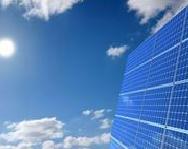 In 2012, the world witnessed a potential first decline in clean energy investment after eight consecutive years of growth. According to Ernst & Young, this dip isn't necessarily a sign of bad news—especially since renewable energy capacity is still expanding and emerging markets are showing strong momentum. Countries like South Africa, as well as regions in the Middle East and North Africa, are experiencing significant growth in solar power, making them key players in the global transition toward sustainable energy.
Gil Forer, Global Clean Energy Manager, emphasized that the shift toward a resource-efficient and low-carbon economy is inevitable. Although 2012 saw a drop in investment compared to the record $237 billion set in 2011, it's not a reason for alarm. The industry is evolving, and long-term trends still favor renewables.
Ben Warren, a manager at Ernst & Young’s Energy and Environment Division, noted that falling costs, rising installed capacity, and booming activity in emerging markets are all positive signs. As businesses evaluate risks related to energy security, regulatory environments, brand reputation, and shareholder expectations, many are rethinking their energy strategies and increasing their focus on renewables.
In the latest Renewable Energy Country Attractiveness Index, Ernst & Young evaluated 40 countries based on their renewable energy markets, infrastructure, and technology potential. The report highlighted that emerging markets dominated the 2012 landscape, aligning with previous forecasts from late 2010 and 2011. This trend reflects a growing recognition of the opportunities in these regions.
Ernst & Young also pointed out that the UAE and Saudi Arabia made their debut in the 2012 index, ranking 35th and 27th respectively. Both nations have ambitious solar energy plans. In the UAE, Masdar has announced that its Shams 1 100MW Concentrated Solar Power (CSP) project will go commercial by next year, while the country is also planning a 100MW Noor PV project. Meanwhile, Saudi Arabia aims to install 32 GW of solar power by 2032.
Beyond the UAE and Saudi Arabia, other Middle Eastern and North African countries such as Qatar, Jordan, and Egypt are also gaining attention as top clean energy destinations over the next five years. With supportive policies and growing demand, the region is becoming a hotspot for renewable investment.
In 2012, the world witnessed a potential first decline in clean energy investment after eight consecutive years of growth. According to Ernst & Young, this dip isn't necessarily a sign of bad news—especially since renewable energy capacity is still expanding and emerging markets are showing strong momentum. Countries like South Africa, as well as regions in the Middle East and North Africa, are experiencing significant growth in solar power, making them key players in the global transition toward sustainable energy.
Gil Forer, Global Clean Energy Manager, emphasized that the shift toward a resource-efficient and low-carbon economy is inevitable. Although 2012 saw a drop in investment compared to the record $237 billion set in 2011, it's not a reason for alarm. The industry is evolving, and long-term trends still favor renewables.
Ben Warren, a manager at Ernst & Young’s Energy and Environment Division, noted that falling costs, rising installed capacity, and booming activity in emerging markets are all positive signs. As businesses evaluate risks related to energy security, regulatory environments, brand reputation, and shareholder expectations, many are rethinking their energy strategies and increasing their focus on renewables.
In the latest Renewable Energy Country Attractiveness Index, Ernst & Young evaluated 40 countries based on their renewable energy markets, infrastructure, and technology potential. The report highlighted that emerging markets dominated the 2012 landscape, aligning with previous forecasts from late 2010 and 2011. This trend reflects a growing recognition of the opportunities in these regions.
Ernst & Young also pointed out that the UAE and Saudi Arabia made their debut in the 2012 index, ranking 35th and 27th respectively. Both nations have ambitious solar energy plans. In the UAE, Masdar has announced that its Shams 1 100MW Concentrated Solar Power (CSP) project will go commercial by next year, while the country is also planning a 100MW Noor PV project. Meanwhile, Saudi Arabia aims to install 32 GW of solar power by 2032.
Beyond the UAE and Saudi Arabia, other Middle Eastern and North African countries such as Qatar, Jordan, and Egypt are also gaining attention as top clean energy destinations over the next five years. With supportive policies and growing demand, the region is becoming a hotspot for renewable investment.400W low power can have the following uses in indoor planting:
1. Fill light: Indoor planting usually requires additional light sources to supplement the lack of natural light. 400W low-power lamps can provide enough light to help plants photosynthesize and promote their growth and development.
2. Control the growth cycle: indoor planting can control the growth cycle of plants by controlling the time and intensity of light. 400W low-power lamps can adjust the light time and intensity according to needs, helping plants get proper light at different growth stages, thus promoting their growth and flowering.
3. Provide enough light area: 400W low-power lamps are suitable for small and medium-sized planting Spaces, and can provide enough light area to cover plants, ensuring that each plant can get enough light.
4. Energy saving and environmental protection: Compared with high-power lamps, 400W low-power lamps can be more energy-saving and reduce energy consumption. At the same time, it also reduces the load on the environment, and is a good choice for the pursuit of green indoor planting.
It should be noted that 400W low-power lamps are suitable for small and medium-sized indoor planting, if the planting space is larger or the plant has higher lighting requirements, more powerful lamps may be needed to meet the needs.
led grow lights waterproof ,horticulture grow lights,led grow in lights
Shenzhen Pvison Technology Co., Ltd. , https://www.pvisunggrowlight.com